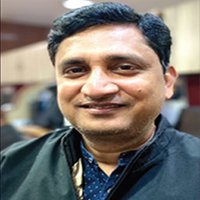
The Missing Colour in Mental Health
Why does mental health still sit in the shadows when a brushstroke, a melody, or a shared story can offer comfort and connection? On 10 October, World Mental Health Day, I strongly feel this question demands urgent reflection.
India faces a silent epidemic. According to the National Mental Health Survey (2023), over 10% of adults live with mental health conditions, yet nearly 80% receive no formal treatment. Millions of Indians silently struggle with stress, trauma, and isolation, particularly youth, differently-abled individuals, and marginalized communities. The reasons are complex: stigma, lack of access, and limited community-based support.
While clinical interventions are essential, they are not the only path to healing. Art offers an alternative — not as a luxury, but as a lifeline. It allows people to express what words cannot. It gives form to grief, anxiety, and hope. It builds emotional resilience and fosters connection. Across India, creative initiatives are quietly transforming lives: schoolchildren cope better with academic pressure, patients recover faster in hospitals, and communities find collective strength through shared expression.
But I strongly feel art alone cannot heal. Its potential is unlocked only when all stakeholders-communities, educators, social initiatives, and policymakers– act together. Without their engagement, even the most promising creative programs remain isolated, and the lofty aspirations of SDG 3 (Good Health and Well-being) and SDG 10 (Reduced Inequalities) remain just that: aspirations.
Stories of Impact: When Creativity Meets Opportunity
My perception of disability and inclusion was transformed when I met Sonu Gupta, a 29-year-old differently-abled artist from Varanasi. Sonu’s journey did not begin in galleries, but on the streets — painting murals that speak of education, inclusion, and dignity. Supported by local social initiatives, his work turns public walls into canvases of hope. Each brushstroke tells a story of resilience, courage, and the power of opportunity.
“When I paint, I don’t just create walls. I create awareness, I create hope,” Sonu shared with me, reflecting on the purpose behind his murals.
Sonu’s art is more than personal expression. It is a platform for awareness. His murals invite passersby to reflect, engage, and empathize. They transform everyday spaces into sites of social dialogue. And they show what happens when individual talent is nurtured by collaborative support here I find CSR had played a vital roles
The highest point of my reflection is this: no single entity can create change alone. Sonu’s impact was made possible by mentorship, inclusive policies, and practical platforms. Across India, when schools, local bodies, social initiatives, and policymakers collaborate, mental health and inclusion initiatives gain scale and sustainability.
Art-based programs are increasingly integrated into schools, hospitals, and community centers. From theatre workshops for adolescents to music therapy for trauma survivors, these initiatives help people process emotions, build confidence, and reconnect with others. Research shows that creative engagement reduces cortisol levels, improves mood, and strengthens emotional regulation.
Yet, these efforts often remain fragmented. Without strategic alignment, they risk being short-lived or inaccessible to those who need them most. I strongly feel that stakeholder collaboration is the bridge between isolated success and systemic impact.
From Expression to Impact: Stakeholder Action
To truly harness the healing power of art, we need more than inspiration — we need structured, ongoing collaboration. Stakeholders across sectors must act together, not just on World Mental Health Day, but every day.
- Educational institutions can integrate creative therapy into curricula, train facilitators, and create safe spaces for expression.
- Social initiatives and community groups can mentor artists, run inclusive workshops, and connect communities with resources.
- Local governments can provide public platforms for creative engagement -from mural walls to open mic spaces -ensuring accessibility.
- CSR programs and philanthropic efforts can support sustainable initiatives that nurture talent, reduce inequalities, and align with SDG 3 and SDG 10.
Across India, programs in both urban schools and rural communities are helping children and adolescents express emotions, build confidence, and process trauma through painting, music, and theatre. These actions do more than support mental health. They make inclusive development possible, foster participation, and turn global goals into local impact. I strongly feel that SDGs will remain aspirational unless stakeholders collaborate on the ground, every day, to create opportunities for all.
Sonu Gupta’s story is a vivid reminder: creativity, when nurtured, can break barriers. It can heal, empower, and connect. But only when stakeholders unite- when art is seen not as decoration, but as intervention can this potential be realized at scale.
Conclusion: Colour, Courage, Collaboration

Art is simple -a mural, a song, a brushstroke- yet its impact is powerful. It heals, empowers, and connects. Sonu Gupta shows that talent, when supported, transforms not just lives, but entire communities.
On this World Mental Health Day, I strongly feel that we must move beyond awareness. We must invest in creativity as a tool for healing, support artists like Sonu, and build safe spaces for expression. Above all, we must act together -because when stakeholders collaborate, art doesn’t just decorate walls. It transforms lives, fosters inclusion, and makes the SDGs achievable in practice, not just on paper.

